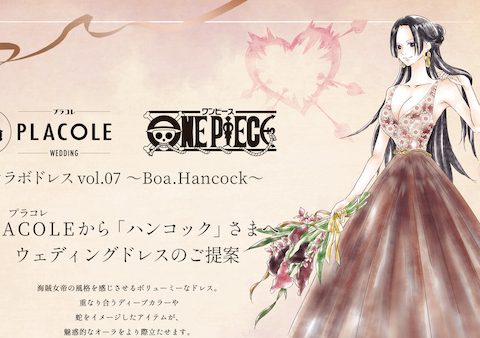
If anything has significant meaning in Japanese culture it is bound to be immortalized in a manga. Trains have been a part of the Japanese comics scene since its beginning. You can see them play a pivotal role in Tatsumi’s gekiga classic the Pushman. Every high school set romance-comedy from Maison Ikkoku to Orange Road and Love Hina to School Rumble have featured trains in some capacity – field trip, beach trip. And let’s not forget the significance trains had on the internet and mass media sensation Densha Otoko a few years back.
Even alternative magazines have felt the urge to ride the rails with their readers. Shogakukan’s IKKI magazine is possibly the premiere alternative manga anthology. In its five year history the magazine has showcased artists like Taiyo Matsumoto, Sensha Yoshida, and Umezu Kazuo to a mass market through Shogakukan’s vast distribution channels. But the thought of an alternative train manga?
 Over the years IKKI‘s Editor-in-chief Egami Hideki, an avid rail fan, has created an office setting built to nurture such a subgenre. With a number of rail fans in his staff, using trains as settings was a matter of pleasure for his editors. A mash up of two of his loves, train manga like Tetsuko no Tabi, Tsukidate no Satsujin, and AbouRessha may not be setting the publishing world ablaze with sales, but they are the culmination of detailed editing, inspired artists, and a market that has grown large enough to support obscure genres.
Over the years IKKI‘s Editor-in-chief Egami Hideki, an avid rail fan, has created an office setting built to nurture such a subgenre. With a number of rail fans in his staff, using trains as settings was a matter of pleasure for his editors. A mash up of two of his loves, train manga like Tetsuko no Tabi, Tsukidate no Satsujin, and AbouRessha may not be setting the publishing world ablaze with sales, but they are the culmination of detailed editing, inspired artists, and a market that has grown large enough to support obscure genres.
Tsukidate no Satsujin, drawn by Sasaki Noriko and written by Ayatsuji Yukito, is by far the most accessible, and when compared to the other two titles in the Tetsu Mania trilogy is clearly the most innovative in the bunch. Written as a whodunit in the vein of Agatha Christie’s Murder on the Orient Express, Tsukidate is something of a Tetsu’s dream manga. It may not have the mania elements that a title like Tetsuko no Tabi has (expect more on that next week), but the detail and research put into this title have made this a must read for any avid train freak.
The story revolves around a pair of murders, twenty years removed from each other. The first murder was a heartless accidental killing committed by rail fans on a fellow train aficionado. As is the case with otaku, sometimes fandom and obsession can make people go blind to the feelings and personal space of others. In a battle to capture a rare photograph of a steam engine crossing through an s-curve surrounded by a forest in its autumn colors, a gaggle of Tetsu muscle their way onto the top of a cliff pushing aside another fan and his son. After snapping their pics, the gang leaves unaware that they had left one of their own dead.
Flash forward to modern day Naha, Okinawa prefecture– 18-year-old Sorami’s mother has just passed away due to illness and a lawyer has shown up at her door. The man has word that Sorami’s grandfather wants to see her in Hokkaido and he has arranged a special trip on a one of a kind overnight train.
Having grown up in Okinawa, Sorami has never been on a train before. Furthermore, her mother was against her even riding the local monorail, for some unknown reason. If the trip across the country, from the southern islands to the most frozen northern wilderness, was enough of an adventure for the young lady, she was about to embark on a very special quest… A search for love! Well maybe not, but it definitely was to be a unique night to be shared by those with a passion for the rails. Sorami was going to have a crash course and the hope was to maybe have her appreciate the beauty of rail culture by experiencing a once in a lifetime ride through a snowy Hokkaido night in a stream-powered locomotive a-la the Orient Express!
 Unfortunately for Sorami and those onboard the Genya bound for Tsukidate, a murder happens. Not long after everyone had dinner together and shared stories about their adventures on Japan’s iron rails, someone was killed in the sleeping car.
Unfortunately for Sorami and those onboard the Genya bound for Tsukidate, a murder happens. Not long after everyone had dinner together and shared stories about their adventures on Japan’s iron rails, someone was killed in the sleeping car.
Tsukidate reads like a train fan’s dream. The cast consists of rail freaks – from the staff to the passengers. Readers who are not as knowledgeable are given only one character, Sorami, for moral support. As Sorami learns about train mania Ayatsuki fills the dialog with random train knowledge that would be invaluable to a Tetsu and quirky for the average rail commuter. Meanwhile, Sasaki’s designs are exquisite. Obviously the locomotive setting is created with the aesthetic nuances representative of train culture that is a few generations old. Carved wood, leather, and glass give off a very romantic feel. So, whether analyzing the differences of locomotives and trains in the dialog, or rendering wooden model train sets, Ayatsuji and Sasaki pay respect to the obsession and its fans by presenting fandom with care and detail. Furthermore, the story itself is a well planned mystery on its own rite. Tsukidate is no Murder She Wrote or CSI. When compared to other manga like Cased Closed or Kindaichi Case Files, however, this short series provides much more entertainment value and is clearly better researched than most. Yet such level of detail could not have been achieved without the full support of an editor and his editor-in-chief.
Tsukidate‘s very existence is indicative of how everything is manga. But what is more significant is how given the opportunity an editor can make any genre, no matter how mundane, highly entertaining and appealing to a broad audience.



![Lady Oscar: The Rose of Versailles [Anime Review] Lady Oscar: The Rose of Versailles [Anime Review]](https://otakuusamagazine.com/wp-content/uploads/2021/11/RoV_Vol2_Front_CoverArt_V1-480x360.jpg)

![Shikimori’s Not Just a Cutie [Manga Review] Shikimori’s Not Just a Cutie [Manga Review]](https://otakuusamagazine.com/wp-content/uploads/2021/05/shikimoris-not-just-a-cutie-v4-16-9-480x360.jpg)

